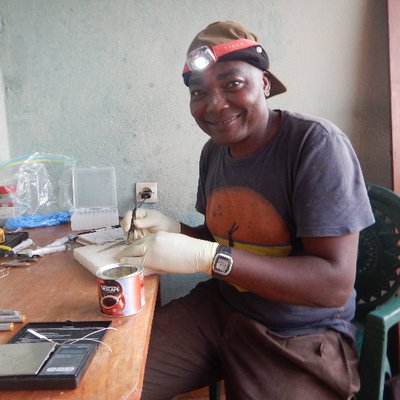I document the diversity and ecology of frogs and caecilians occurring in Cameroon to update amphibians checklists of the country. Describe the pattern of spread of the amphibian fungus pathogen Batrachochytrium dendrobatidis (bd). Characterize the skin microbiome of frogs and caecilian to better understand host pathogen interaction in multidiverse amphibian communities. Use niche modeling technics to predict bd suitability across the country which will allow stake holders to be aware of the threats pose by diseases and the dynamics of the pathogen through space and time. This will provide local authorities with a tools to address their conservation needs.
Farming practices that use a variety of agrochemicals particularly in the mountains in Cameroon in fluence frogs and caecilians abundance and occurrence in Cameroon. Nowadays when sampling in the western part of the county I will meet at least three farmers daily, with spraying pump and often observe them spraying their crops. One morning between 7 and 10 am I counted 10 farmers each with pump one morning in June 2018 and this was unusual as I have been sampling in the area regularly since 2010 but have not met such high frequency of pump carriers. Grazing by cows and sheeps is also becoming common practice particularly in the mountains which are sites for higher amphibians endemism in Cameroon. In addition, mining activities in the eastern part of the country is gaining ground and contribute to deteriorate the quality of water that frogs and humans rely on. I have witnessed locals complaining about the fact they were not able to bath because of the poor quality of the water.

